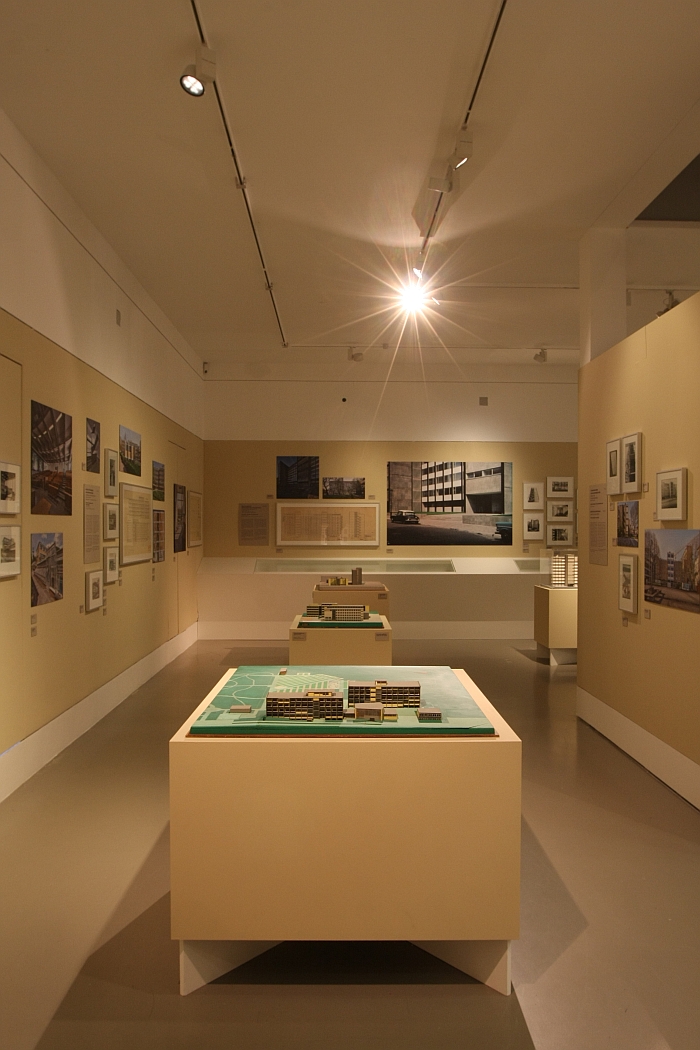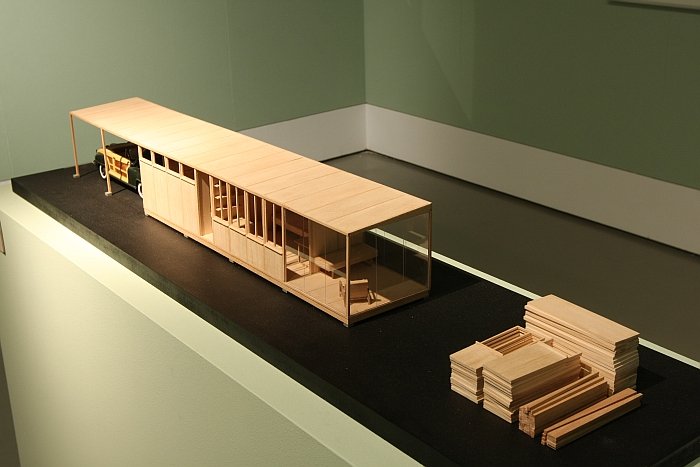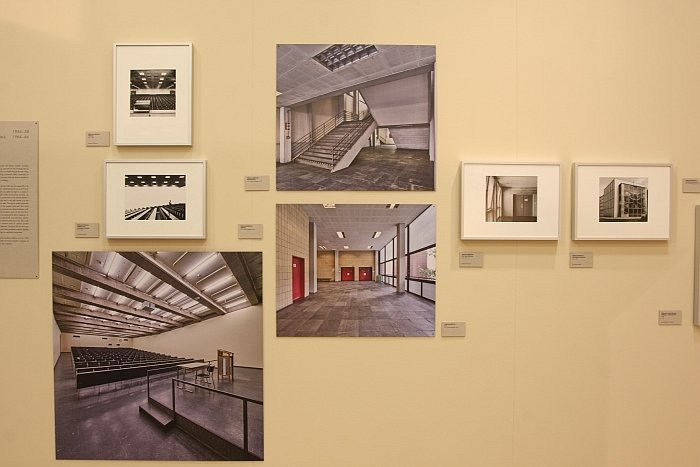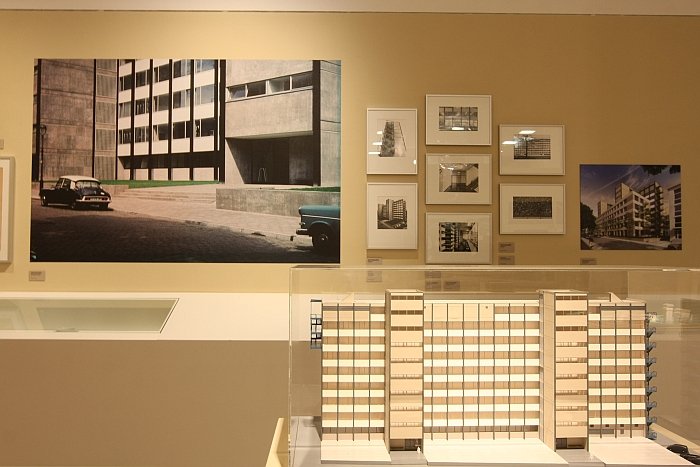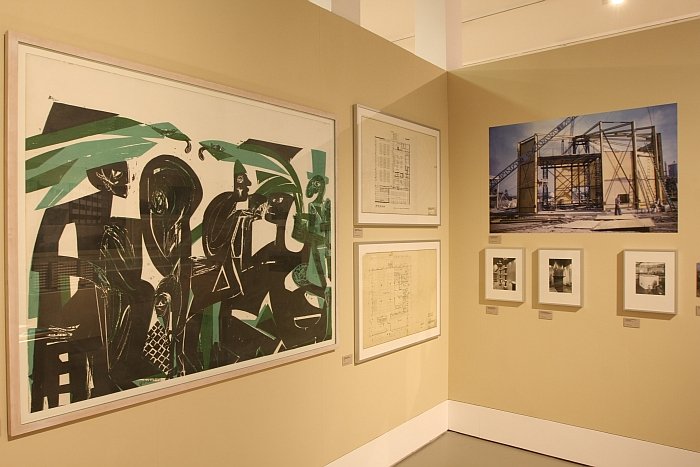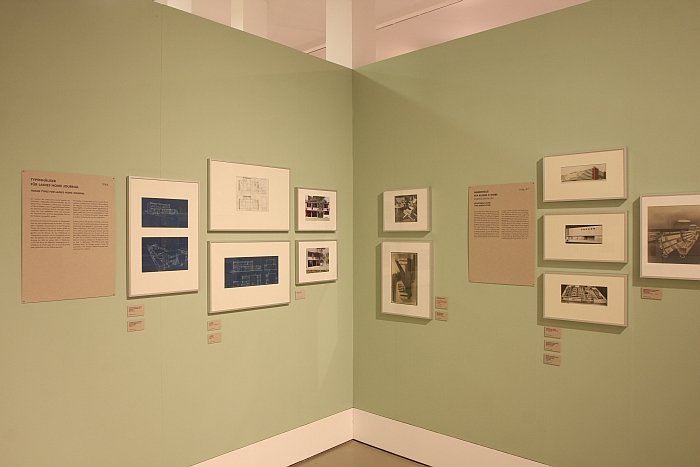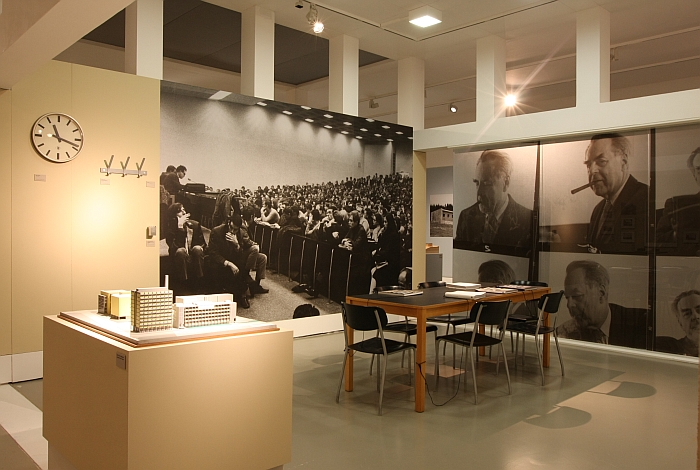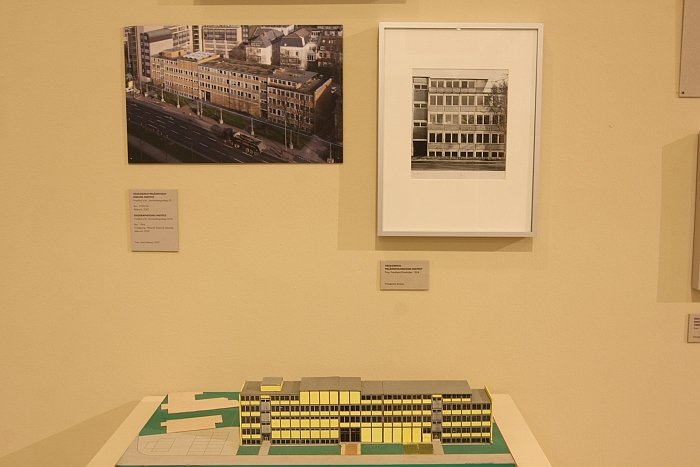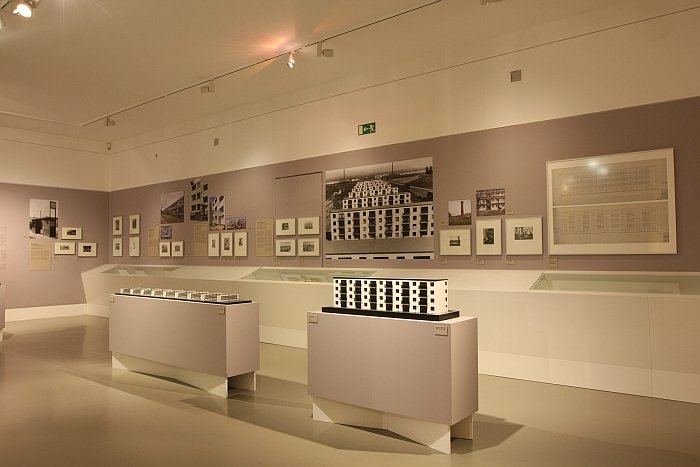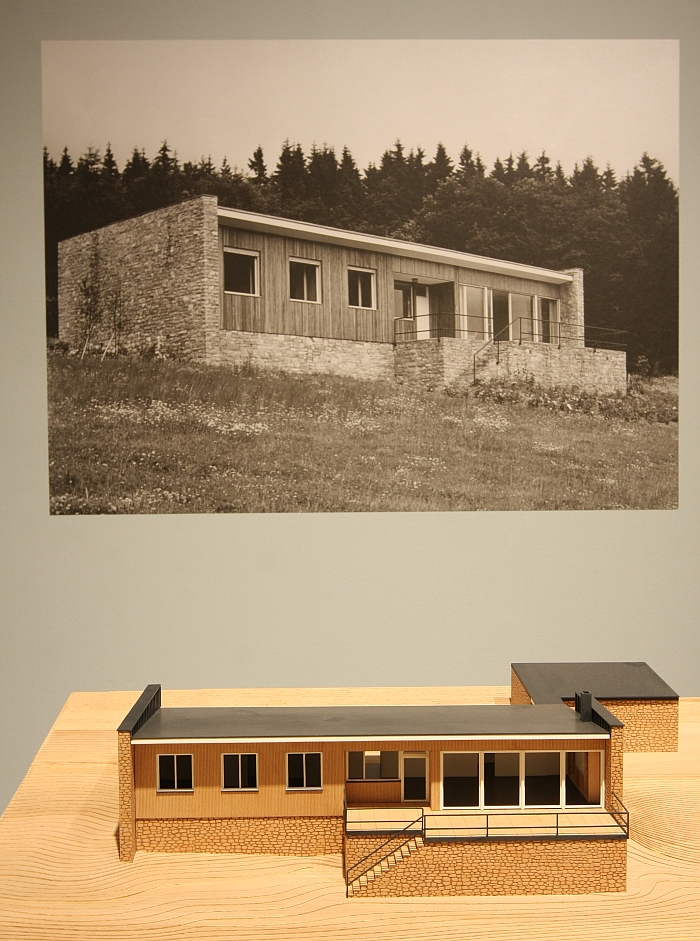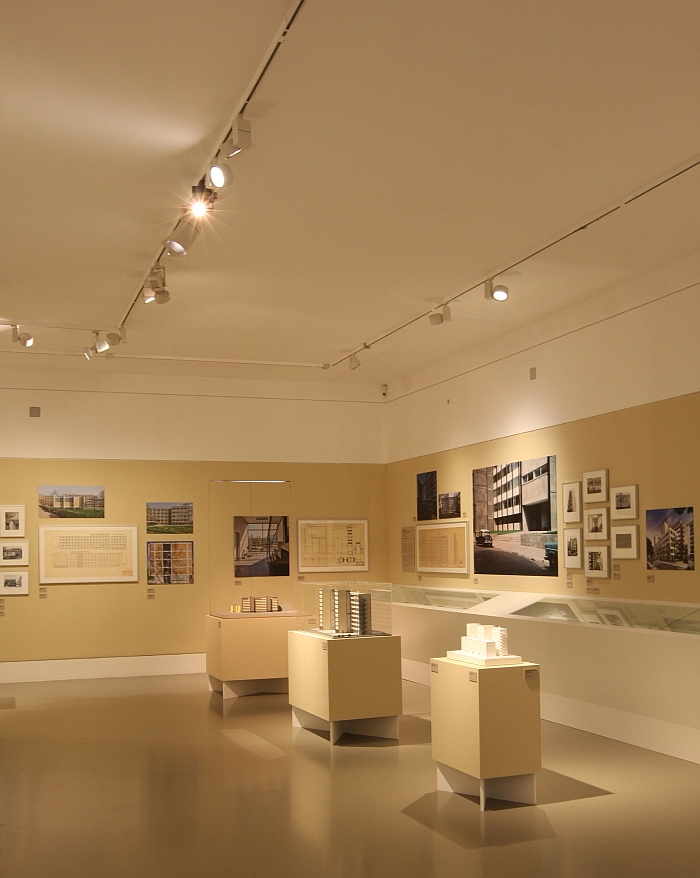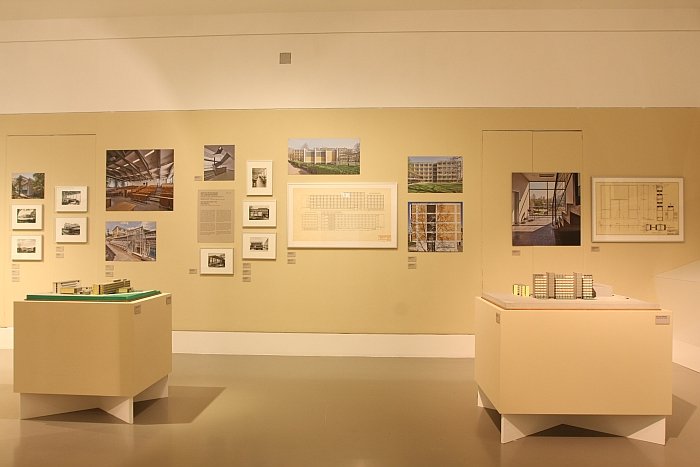Following on from the exploration of Ferdinand Kramer's design work in the exhibition The Kramer Principle: Design for Variable Use at the Frankfurt Museum Angewandte Kunst, the Frankfurt based Deutsches Architekturmuseum is presenting Line Form Function. The Buildings of Ferdinand Kramer, an exhibition dedicated to the German functionalist's architectural output.
In many ways the logical follow up. And an excellent extension and completion of The Kramer Principle.
So much so it makes you wonder why no one came up with the idea of a single exhibition looking at both aspects.....
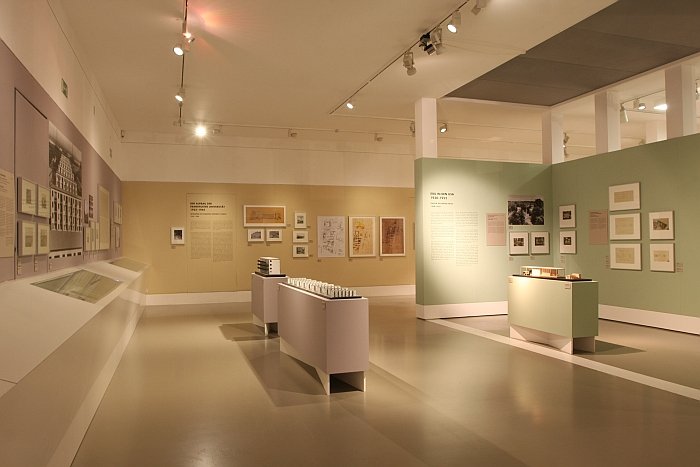
Born in Frankfurt in 1898 Ferdinand Kramer enrolled to study architecture under Theodor Fischer at the TH Munich in spring 1919 before in the summer of that year switching to Bauhaus Weimar. Before returning to Munich in late summer 1919, disappointed by the lack of a formal architecture course at Bauhaus. A course of studies the world's best known architecture institution famously never managed to offer.
Following the completion of his studies in Munich in 1922 Ferdinand Kramer returned to Frankfurt where he largely busied himself with exhibition design and household goods commissions, including most famously his "Kramer Oven" from 1923, before in 1925 the Frankfurt City Buildings Commissioner Ernst May brought Kramer into his team for the so-called Neuen Frankfurt project, arguably one of the most important modernist urban planning and construction projects of the inter-war years.
And it is here that Line Form Function. The Buildings of Ferdinand Kramer begins with a presentation of Kramer's contribution to the Neuen Frankfurt project that sets the tone for the exhibition: a mix of models, photographs, plans and documentation which explain what Ferdinand Kramer did, how he did it and why. Never going especially deep Line Form Function presents the subject matter in enough detail to allow one to understand both works and context, but without losing non-architects in a forest of unnecessary technical jargon. Yes, given the number of models, photographs and plans it is an exhibition primarily for those with an established interest in architecture. But then it is being staged in a specialist architecture museum.......
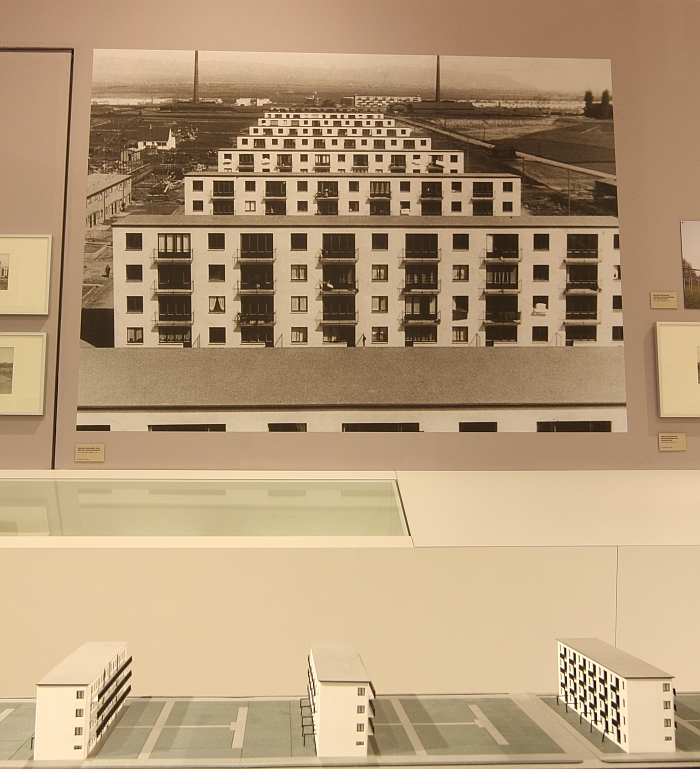
Following Ernst May's move to Moscow in 1930 Ferdinand Kramer remained in Frankfurt where he ran his own architecture practice; albeit only temporarily, banned by the Nazis from working as an architect on account of his wife's Jewish ancestry Ferdinand Kramer emigrated to America in 1938. Despite spending 14 years in America, and taking on American citizenship in 1945, Ferdinand Kramer never achieved the success of other Nazi enforced émigrés, and thus the presentation of his time in America is the most compact section of the exhibition. Does however contain arguably the most fascinating exhibit: a modular house system he developed to be built by Walter Gropius and Konrad Wachsmann's General Panel Corporation, a company which never really got off the ground and thus remains one of those enticing "what could have beens". As does Kramer's weekend house concept.
In 1952 Ferdinand Kramer returned to Frankfurt to begin what would become his legacy project: the rebuilding and expansion of Frankfurt University. As uncompromising as it is open and inviting and possessing more character and warmth than many buildings of that period his development of the numerous institutes and buildings at Frankfurt University, in addition to his designs for the fixtures, fittings, crockery, logos et al, perfectly illustrates Ferdinand Kramer's understanding and interpretation of functionalist architecture. One of the genuine highlights of the exhibition is a "split model" showing the before and after of the main Jügelhaus entrance: before Baroque Revival pillars and ostentations pushing, self-importantly, from the façade into the street: after glass and few strips of metal decently recessed into the façade. Very interesting in the comparison is that Kramer retained the original window alignment and organisation: that the former windows fit so well into Kramer's reorganisation of the doorway neatly highlighting just how international modernism arose out of historicism. Needless to say not everyone was overjoyed by Kramer's redesign of the entrance; in a letter to the Frankfurter Allgemeine Zeitung the sociologist Franz W Jerusalem denounced Kramer's design as "modern Barbarism", but if we're all honest sometimes progress needs a little bit of controlled barbarism to keep it on the straight and narrow.
The most pleasing part of the exhibition is without question the final section devoted to Ferdinand Kramer's private house projects. It's all too easy to define Ferdinand Kramer by his large projects, be that Neuen Frankfurt or Frankfurt University, that he also built sensitively understated private houses is all too often forgotten, yet, and as Line Form Function perfectly illustrates, they are every bit as important to understanding Ferdinand Kramer's oeuvre as his larger, monumental, works.
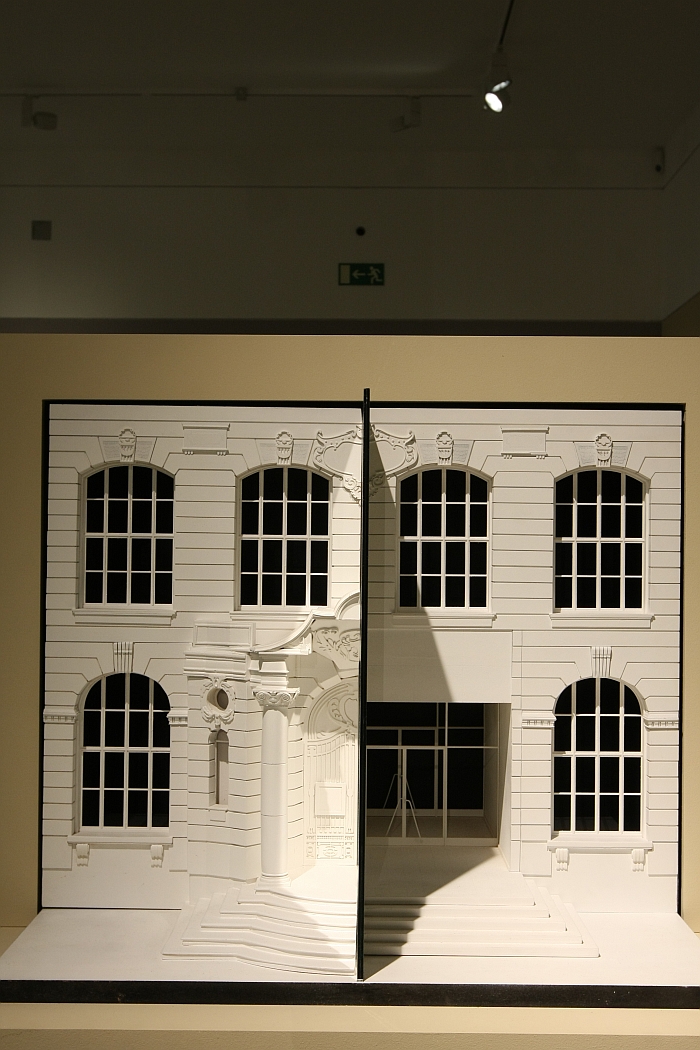
That the exhibition is being staged now is very timeous. On the one hand Frankfurt University is in the midst of a move to new buildings on a new purpose built site and the Kramer buildings may not be with us much longer, or at least not all of them, thus it is an opportune moment to investigate what was realised and why; and on the other projects such as Neuen Frankfurt were created against a background of emergency and chronic shortages in terms of housing provision, a situation we have again today and which social, economic and ecological change will invariably exasperate in coming decades. Contemporary Europe needs solid urban construction concepts if it is to cope with the coming changes, a lot of what the functionalists of the 1920s and 1930s realised may now be outdated in terms of material and processes, but in terms of background ideas and reasoning are often every bit as relevant as they ever were. As we never tire of repeating, one doesn't need to continually reinvent the wheel, the old idea still works, can however occasionally be tweaked a little.
It's all too easy to write Ferdinand Kramer off as a provincial Frankfurt architect, someone of interest to the city but no one else. Such is not only extremely rude, but foolhardy. The geographic spread of an architect's work has no correlation to its quality, and often an architect who works in one location long enough can realise more of their ideas and develop their theories further than someone who is continually battling with ever new clients and/or building regulations. Ferdinand Kramer has left us a fascinating, challenging and for all important, body of work, Line Form Function. The Buildings of Ferdinand Kramer is an excellent place to become acquainted with it.
And now all we can do is hope that someone has the sense to unite The Kramer Principle & Line Form Function in one coherent exploration of Ferdinand Kramer's life and work.
It would be the logical follow up, extension and completion of the project........
Line Form Function. The Buildings of Ferdinand Kramer runs at the Deutsches Architekturmuseum, Schaumainkai 43, 60596 Frankfurt am Main until Sunday May 1st.
Full details including information on the accompanying fringe programme can be found at http://dam-online.de

